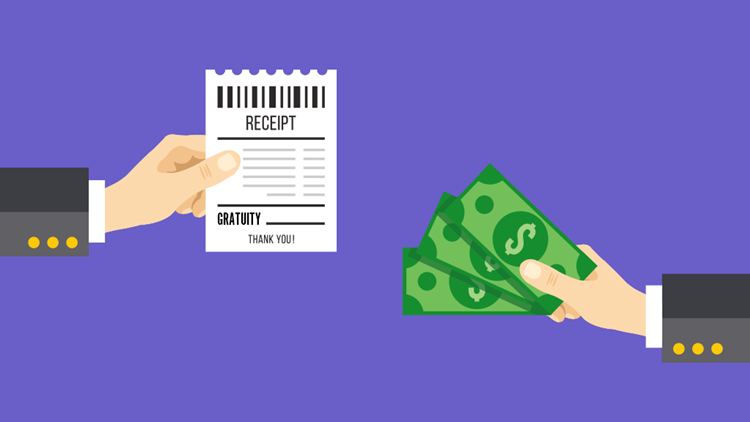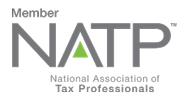by | Feb 17, 2022 | Tax Tips and News
The Internal Revenue Service wants college students to be a little smarter when it comes to their scholarships and any emergency grants they may have gotten due to the pandemic.
The agency is spreading its knowledge by updating frequently asked questions (FAQs) in its webpage on Higher Education Emergency Grants.
Fact Sheet 2022-11 now has two new questions and answers to enlighten taxpayers on their tax responsibilities in relation to higher education.
What do students need to know?
The updated fact sheet says any emergency grants related to the COVID-19 pandemic received by the student taxpayer from the organization providing their scholarship are not taxable and aren’t included in the student’s income.
This covers grants made by a federal agency, a state, an Indian tribe, a higher education institution or some other scholarship-granting organization.
When reporting their qualified tuition and related expenses, taxpayers shouldn’t decrease tuition and expenses by the amount of an emergency financial aid grant.
Students who used an emergency grant to pay for qualified tuition and expenses on or before Dec. 31, 2020, may be able to claim a tuition and fees deduction, the American Opportunity Credit, or the Lifetime Learning Credit on a 2020 tax return. For more information, see Higher Education Emergency Grants Frequently Asked Questions.
After Dec. 31, 2020, the tuition and fees deduction isn’t available. Publication 970, Tax Benefits for Education, has details.
What do institutions need to know?
Since students don’t count emergency financial aid grants as income, higher education institutions don’t have to issue Forms 1099-MISC to report those grants.
Emergency grants made under the Coronavirus Aid, Relief and Economic Security Act—also known as the CARES Act—or the COVID-Related Tax Relief Act are covered by this provision, so they won’t show up in Box 5 of Form 1098-T.
However, any amounts that do qualify for “qualified tuition and related expenses” under the American Opportunity Credit, the Lifetime Learning Credit or the tuition and fees deduction put the reporting requirements of Internal Revenue Code section 6050S into play. If so, those extra amounts, including tuition and expenses paid by emergency financial aid grants to students, will show in Box 1 of Form 1098-T.
Sources: IRS updates FAQs for Higher Education Emergency Grants; Emergency aid granted to students due to COVID is not taxable
– Story provided by TaxingSubjects.com
by | Feb 16, 2022 | Tax Tips and News
The Internal Revenue Service has upped its game in the virtual currency world with a revision of an important reporting form.
Form 14457, Voluntary Disclosure Practice Preclearance Request and Application, lets taxpayers—who could face criminal charges for willful violation of the tax laws—pass information to the IRS voluntarily that they didn’t disclose before.
The upgraded form features an expanded section on reporting virtual currency. Other updates and additions to the form include:
- IRS Criminal Investigation now accepts photocopies, facsimiles and scans of taxpayer signatures. Taxpayers can send this form via eFax to 844-253-5613 to reduce mailing and processing times. Previously, Part II of this form had to be mailed.
- A penalty structure for employment tax and estate and gift issues.
- A check-box for the inability to pay in full.
The changes were made after the IRS got suggestions and other insight from tax professionals and stakeholders, taking into account the trends that vary depending on the type of asset held.
“This is an important form and process for people who recognize it’s better to step forward and address their tax situations head-on, before facing IRS enforcement action,” said Doug O’Donnell, Deputy Commissioner Services and Enforcement. “The revised form includes a number of updates, and we encourage people to review the guidelines and consult a trusted tax professional.”
No escape from the law
Since the form was introduced, the IRS estimates thousands of taxpayers have used it as an option to come clean about their tax situation and possibly avoid criminal prosecution. Making a truthful disclosure, however, doesn’t mean a newly compliant taxpayer can also escape an IRS audit and full payment of taxes, interest and penalties.
Taxpayers who did not commit any tax-related crimes and want to correct their mistakes should use an option other than Form 14457. They should seek the advice of a tax professional or legal counsel to determine which option is best for them.
If using Form 14457 is called for, such voluntary disclosure has to be timely, accurate and complete. The taxpayer making the disclosure also has to go the extra mile and cooperate with the IRS to determine just what their true tax liability is and to make full payment – including interest and penalties.
What if a taxpayer can’t pay up?
A taxpayer unable to pay the tax, interest and penalties that are owed can ask the IRS to consider other payment arrangements. If a taxpayer contends they are unable to pay the total required, they have to disclose this, submitting a Form 433-A, Collection Information Statement.
However, taxpayers should remember if they seek payment options from the IRS, they will have the burden of proof to establish that they are truly unable to pay the total owed.
For more information on the Voluntary Disclosure Practice and other options for compliance, visit:
Source: IR-2022-33
– Story provided by TaxingSubjects.com
by | Feb 15, 2022 | Tax Tips and News
The Internal Revenue Service has come to the conclusion that the agency has more on its to-do list than it can get done at one time. Something, they found, had to be “put on the back burner.”
In order to service taxpayers filing now for the 2021 tax year, the IRS decided to suspend over a dozen additional letters to taxpayers, including automated collection notices, which are sent out when a taxpayer owes additional tax, but the IRS doesn’t have a record that they filed a return.
On the surface, it may seem as though this might not free up the manpower the IRS expects. But many of these letters—which include unfiled tax return notices and balance-due notices—are likely to generate a large workload by IRS personnel. That, when added to the several million income tax returns that the IRS has in backlog from the previous filing season, could be beyond the agency’s capabilities.
The COVID-19 pandemic led to a slowdown in processing of these backlogged returns; many of them have issues that meant the returns should be examined by an IRS specialist. The pandemic forced the agency to be even more short-staffed than normal.
IRS Commissioner Chuck Rettig says the only way to have enough staff to process the current crush of income tax returns was to shelve the letters and notices for later.
“IRS employees are committed to doing everything possible with our limited resources to help people during this period,” said Rettig.
“We are working hard, long hours pushing creative paths forward in an effort to be part of the solution, rather than the problem. Our employees continue to expend every effort to balance a confluence of multiple, unprecedented demands—including successfully starting the filing season, working our inventory of unprocessed tax returns as well as looking for additional ways to minimize burden for taxpayers, tax professionals and businesses.
“Our efforts are not limited to suspension of these additional letters and the possibility of similar actions going forward. We have redeployed and reallocated resources throughout the IRS and have implemented innovative strategies in an ongoing effort to provide a meaningful reduction in our inventories,” Rettig said.
The commissioner added that the automatic notices have been suspended until the IRS can work through the backlog of returns.
Not all notices stop
Some notices will still go out to taxpayers and tax professionals in the coming weeks. The IRS stresses, however, that there’s generally no need to call or respond to the notice; the agency is working as fast as it can to clear the backlog.
At the same time, however, the IRS recommends that if a taxpayer or tax pro gets a notice and believes it’s accurate, they should take corrective action to comply with the notice.
Taxpayers who have a balance due, for example, could have interest and penalties increase. IRS employees may also issue notices to particular taxpayers, covering specific compliance issues.
It should be noted that the IRS doesn’t have authority to stop all notices; many are required by law to be issued within a certain period.
What’s included in the suspension?
Notices to individual taxpayers:
- CP80, Unfiled Tax Return
- CP59 and CP759 (in Spanish), Unfiled Tax Return(s) – 1st Notice
- CP516 and CP616 (in Spanish), Unfiled Tax Returns – 2nd Notice
- CP518 and CP618 (in Spanish), Final Notice – Return Delinquency
- CP501, Balance Due – 1st Notice
- CP503, Balance Due – 2nd Notice
- CP504, Final Balance Due Notice – 3rd Notice, Intent to Levy
- 2802C, Withholding Compliance letter
Notices to businesses:
- CP259 and CP959 (in Spanish), Return Delinquency
- CP518 and CP618 (in Spanish), Final Notice – Return Delinquency
Source: IR-2022-31
– Story provided by TaxingSubjects.com
by | Feb 12, 2022 | Tax Tips and News
Workers have returned to the service industry lately—in droves. With the threat of coronavirus subsiding in many locations, restaurants and other establishments have sprung back to life.
With the surge in employment, we thought it appropriate to remind workers throughout the service industry there’s one phrase they should never forget: Tips are taxable income.
Anyone who works in the service industry—or has a side hustle in the gig economy—needs to keep that advice front and center come tax time. The point is taxpayers need to understand their obligations that come along with the tips they earn, so they don’t get a nasty surprise when they file.
Straight talk on tips
We’ll say it again: all tips a taxpayer receives must be reported as income. This includes tips that come directly from customers; tips that are added using credit, debit or even gift cards; and tips that come from a tip-splitting arrangement with fellow employees.
And don’t think those two tickets to the concert that your last customer gave you are not fair game—they are. Non-cash tips are income and subject to tax, just as if they were cash.
The Internal Revenue Service says three good habits can keep taxpayers out of hot water with their tips.
First, keep a daily record of tips received. This gives taxpayers hard numbers they can report to the IRS and avoid guessing later.
Second, report all tips to the employer. Simple enough.
Third, report all tips on the taxpayer’s tip record on their income tax return.
If taxpayers have questions about whether their tips really are taxable, they can consult the Interactive Tax Assistant on the IRS website for help.
Employers should remember that any employee who receives more than $20 in tips in any month has to report that month’s tips to the employer. The report has to be made by the 10th day of the following month.
For example, if a waiter gets $25 in tips during November, he has to report his total tips for that month by December 10.
Since the employer is required to withhold federal income, Social Security and Medicare taxes on the reported tips, it’s vital that the employee makes the monthly report on time.
For more information on tips and how to report them, see these resources from the IRS:
Source: IRS Tax Tip 2022-23
– Story provided by TaxingSubjects.com
by | Feb 11, 2022 | Tax Tips and News
It’s a new year and a new filing season. That means the Internal Revenue Service is hard at work fighting some long-running scams aimed at tricking taxpayers out of their hard-earned money.
Many times, the thieves impersonate IRS officials and may use text message scams, email or phone scams. This year, the IRS cautions that the thieves may even use unemployment fraud for their illegal purposes. And it’s a racket that extends beyond filing season.
“With filing season underway, this is a prime period for identity thieves to hit people with realistic-looking emails and texts about their tax returns and refunds,” said IRS Commissioner Chuck Rettig. “Watching out for these common scams can keep people from becoming victims of identity theft and protect their sensitive personal information that can be used to file tax returns and steal refunds.”
Known as the Security Summit, the Internal Revenue Service’s partnership with state tax agencies and national tax industry leaders has warned the nation’s taxpayers to watch out for common scams this tax season—but to also remain vigilant all year long.
To help taxpayers guard against these schemes, here’s how the most common examples work.
Text Message Scams
Text messages that falsely purport to come from the IRS were on the increase last year. These scam message show up unannounced on taxpayers’ smartphones and usually mention COVID-19 or “stimulus payments”—or both.
The bogus text messages also contain fake links to nonexistent IRS websites or online tools, that, once they’re clicked, instead can install malware on the recipient’s computer, or trick the recipient into divulging personal identifying information.
The IRS says the defense against these text messages is simple: NEVER click links or open attachments in unsolicited, suspicious or unexpected text messages, no matter if they claim to come from the IRS, state tax agencies or some company within the tax community.
While the IRS has its Secure Access authentication tool, the agency does not use text messaging to communicate personal tax issues such as bills or refunds. The IRS also stresses that it doesn’t send messages to taxpayers using social media.
If a taxpayer gets an SMS or text that they suspect to be a scam, the taxpayer should take a screenshot of the message and send the screenshot in an email to phishing@IRS.gov. Include the date, time and timezone the taxpayer got the message as well as the telephone number that received it.
Phone Scams
While the IRS says it will never leave prerecorded, urgent or threatening messages on taxpayer’s phones, the scammers sure will.
Most of the variations on the phone scam theme feature threats that the IRS can’t and won’t make. The threats made are a common thread among all IRS-spoofed phone scams, including messages that if the recipient doesn’t call back, a warrant will be issued for their arrest, intervention by law enforcement, deportation or revoking the recipient’s licenses.
Here’s a list of things the IRS—and its authorized private collection agencies—will never do:
- Call to demand immediate payment using a specific payment method such as a prepaid debit card, gift card or wire transfer. The IRS does not use these methods for tax payments.
- Threaten to immediately bring in local police or other law-enforcement groups to have the taxpayer arrested for not paying.
- Demand that taxes be paid without giving the taxpayer the opportunity to question or appeal the amount owed.
- Ask for credit or debit card numbers over the phone.
Generally, the IRS will first mail a bill to any taxpayer who owes taxes. All tax payments should only be made payable to the U.S. Treasury. Checks should never be made payable to third parties.
If one of these scam calls is received by a taxpayer who doesn’t owe taxes and has no reason to think they do, the first line of defense is evasion: don’t give out any information and hang up immediately.
Second, report the call to the Treasury Inspector General for Tax Administration (TIGTA) at IRS Impersonation Scam Reporting.
Taxpayers should also email the IRS at phishing@IRS.gov, giving them the caller ID or callback number. Remember to put “IRS Phone Scam” in the Subject line. Lastly, taxpayers can report the scam call to the Federal Trade Commission on its FTC.gov website. Add “IRS Telephone Scam” in the notes.
If a taxpayer gets a call and owes tax—or thinks they do—they should go online to view their account information at IRS.gov to see the official amount that they owe. They can also look over their actual payment options.
Next, call the number on the billing notice that arrived in the mail or call the IRS at 800.829.1040 for help from a REAL IRS employee.
Unemployment Fraud
Unemployment fraud becomes apparent when workers are sent unemployment claims or other benefit payments for which they never applied.
Indeed, states have seen an increase in fraudulent unemployment claims, filed by organized crime using stolen identities to fraudulently collect benefits.
These benefits are taxable, so states issue Form 1099-G, Certain Government Payments, both to the recipient and to the IRS. The form reveals any taxable compensation received and the tax withheld.
A worker who gets a fraudulent or incorrect 1099-G should contact the issuing state agency immediately to request a corrected 1099-G.
For more on how to report unemployment fraud, getting a corrected Form 1099-G, and other steps, visit the U.S. Department of Labor’s site at DOL.gov.
Employees may be targets of unemployment identity theft if they received:
- Mail from a government agency about an unemployment claim or payment for which they did not file. This includes unexpected payments or debit cards and could be from any state.
- An IRS Form 1099-G reflecting unemployment benefits they weren’t expecting or didn’t receive. Box 1 on this form may show unemployment benefits they did not receive or an amount that exceeds their records for benefits they did receive. The form itself may be from a state in which they did not file for benefits.
- A notice from their employer indicating the employer received a request for information about an unemployment claim.
Email Phishing Scams
Let’s get to the bottom line up front: When the IRS has to reach out to an individual taxpayer, it does so through the U.S. Postal Service—the regular mail. The IRS does NOT use email to request personal or financial information.
Taxpayers should be very suspicious of any unsolicited email that claims to be from the IRS or another program closely linked to the agency. If a taxpayer gets one of these suspect emails, they should send the email as an attachment to phishing@IRS.gov. The IRS’ Report Phishing and Online Scams page has more information.
Taxpayers are being warned to pay special attention to how the IRS website is used in suspicious emails and other scam documents. The official IRS website is IRS.gov. If a purported IRS website ends in “.com,” it’s a scam. All the official IRS webpages, forms and online tools all end in “.gov.”
For more information on scams, see Tax Scams and Consumer Alerts on IRS.gov.
Source: IR-2022-25
– Story provided by TaxingSubjects.com










